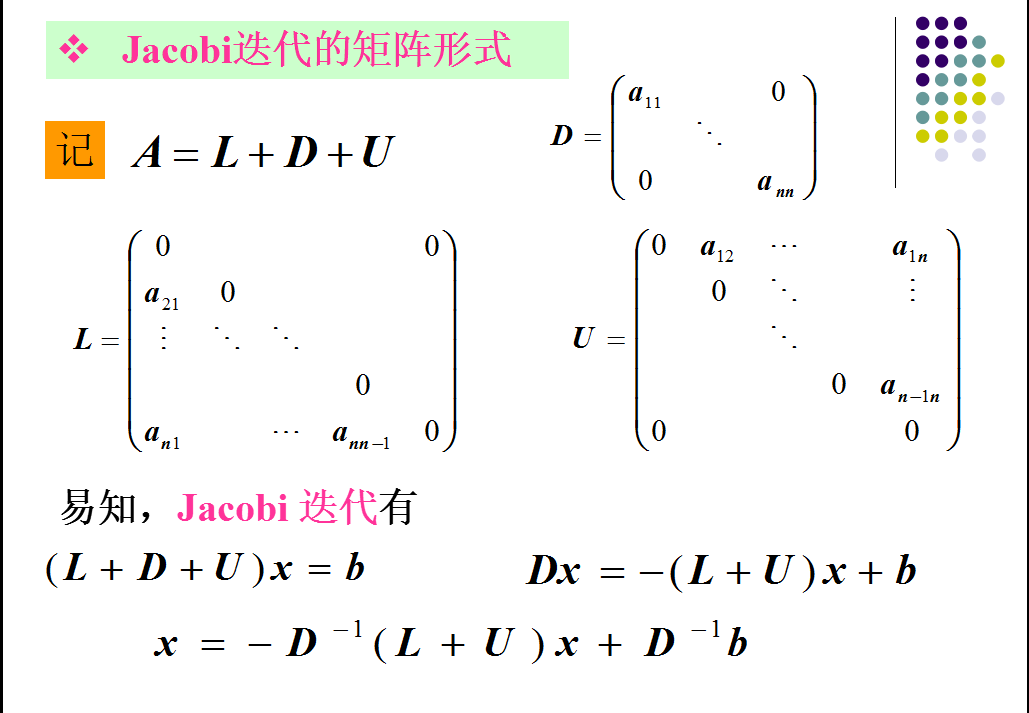- import numpy as np
- Delta=0.0001#精度要求
- #数据读取
- data = []
- f = open("H:/Notepad/数学实验/jacobi_data.txt")
- for line in f:
- line = line.replace("\n","")
- data.append(list(map(eval, line.split(","))))
- f.close()
- data=np.array(data)
- #对data行初等变换,主元变为每列最大值
- row,column=data.shape
- for i in range(row):
- max_value_index=np.argmax(np.fabs(data[i:row,i]))
- temp=np.copy(data[i,:])
- data[i,:]=data[max_value_index+i,:]
- data[max_value_index+i,:]=temp
- #LU: -(L+U)
- #D:系数矩阵的对角线元素
- #b:Ax=b中的b
- LU=np.negative(data[:,0:column-1])
- D=np.zeros(row)
- b=data[:,column-1]
- for i in range(row):
- D[i]=data[i,i]
- LU[i,i]=0
- #迭代求解
- x=np.ones(row)#用于存储迭代过程中x的值
- y=np.ones(row)#用于存储中间结果
- for iteration in range(100):
- print('x:',x)
- #迭代计算
- for i in range(row):
- y[i]=np.vdot(LU[i,:],x)+b[i]
- y[i]=y[i]/D[i]
- #判断是否达到精度要求
- if np.max(np.fabs(x-y))<Delta:
- print('iteration:',iteration)
- break
- #将y幅值到x,开始下一轮迭代
- x=np.copy(y)
原理:


注:
实例数据:jacobi_data.txt 。组织方式:[A,b]
2,-1,-1,-5
1,1,10,11
1,5,-1,8